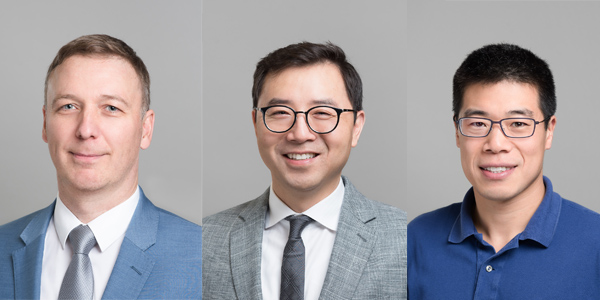
March 19, 2019
Perry King
Three ECE researchers have been honoured with Connaught Innovation Awards, advancing research into a wide range of technologies, such as implantable devices. These include electrodes to relieve pain and neurostimulators for treating drug-resistant epilepsy.
The Connaught Innovation Awards recognize and support innovations that have strong socio-economic or commercial potential. This year, a total of 12 researchers from across U of T will share almost $600,000 in funding.
“We extend our congratulations to all the winners of this year’s Connaught Innovation Award,” said Vivek Goel, U of T vice-president of research and innovation. “They represent a tremendous range of research and innovation work with considerable potential to have a great impact on society.”
One of the recipients is Paul Yoo (IBBME, ECE). As the son of a doctor and an engineer, he was always drawn to figuring out how the body works and finding better ways to treat chronic conditions.
Yoo and his research team have studied the nervous system and built microscopic, implantable electrodes that stimulate nerves and could help relieve pain, treat pelvic dysfunction and encourage healing.
But there was a problem. “There are cases where if you want to take it out, the encapsulation tissue might make it difficult to cleanly take it all out” – such as when a patient needs to remove it before entering an MRI machine, or if the device fails, he explained.
So, in a collaboration with Polumiros, a startup spun out of the lab of Professor Paul Santerre (IBBME), Yoo is testing a novel polymer coating added to the implants that could prevent extraneous tissue growth.
“We’ve combined their technology with my expertise,” Yoo said.
Yoo and his team also have a partnership with Novela Neurotechnologies, a startup that is developing a brain implant as a way to treat depression and epilepsy. They are looking to change how such implants are manufactured and how patients are treated.
“In my lab, we’ll be testing the long-term performance of this new device,” said Yoo, who has worked with the Santerre lab for about two years.
“With the Connaught Innovation Award, it’s the opportunity to get this off the ground,” he said.
Other ECE and U of T Engineering recipients are:
- Ding Yuan (ECE) — Non-intrusive software failure resolution;
- Roman Genov (ECE) — Clinical validation of an intelligent, implantable neurostimulator for treating drug-resistant epilepsy;
- Mark Chignell (MIE) — Centivizers for managing behaviour in dementia using rewarded activities;
- Andreas Mandelis (MIE) — Wavelength-modulated intravascular differential photoacoustic radar imaging (IV-DPARI) for minimally invasive human coronary lipid-rich plaque arterial wall (intima) imaging diagnosis;
- Alison McGuigan (ChemE) — An in-vitro human muscle cell potency assay for cell product QC and muscle endogenous repair drug identification; and
- Vladimiros Papangelakis (ChemE) — Forward osmosis-freeze concentration (FO-FC) hybrid process to separate and recover water from contaminated industrial effluents.
This story originally appeared on U of T Engineering News.
More information:
Jessica MacInnis
Senior Communications Officer
The Edward S. Rogers Sr. Department of Electrical & Computer Engineering
416-978-7997; jessica.macinnis@utoronto.ca